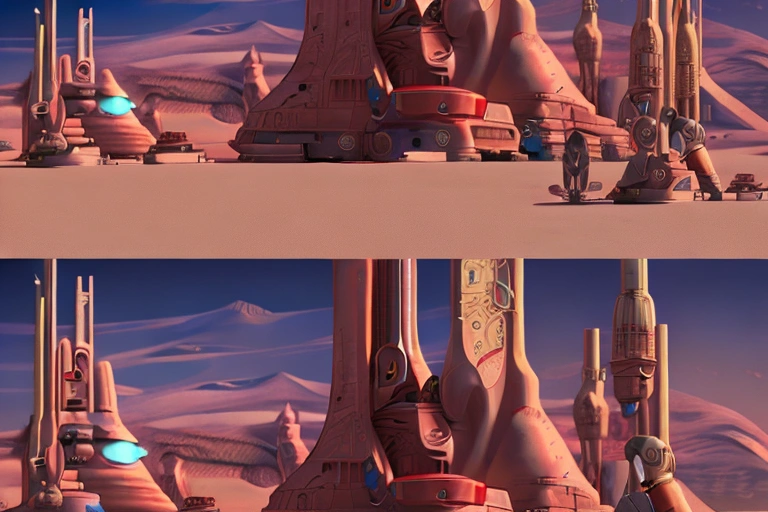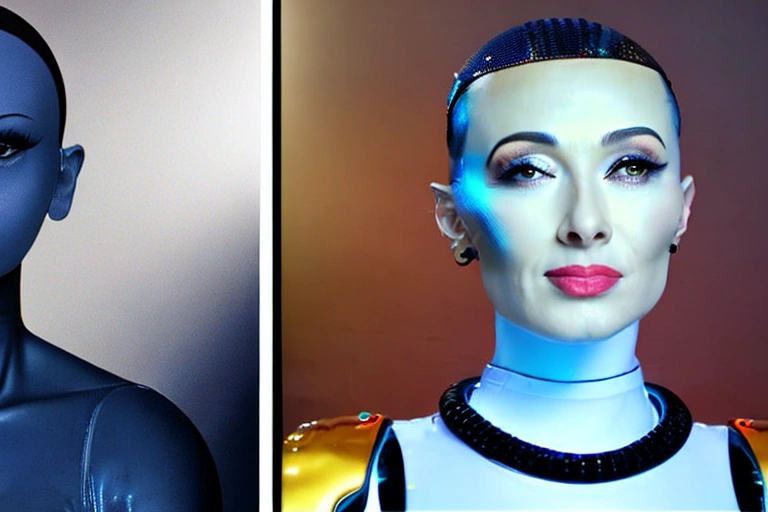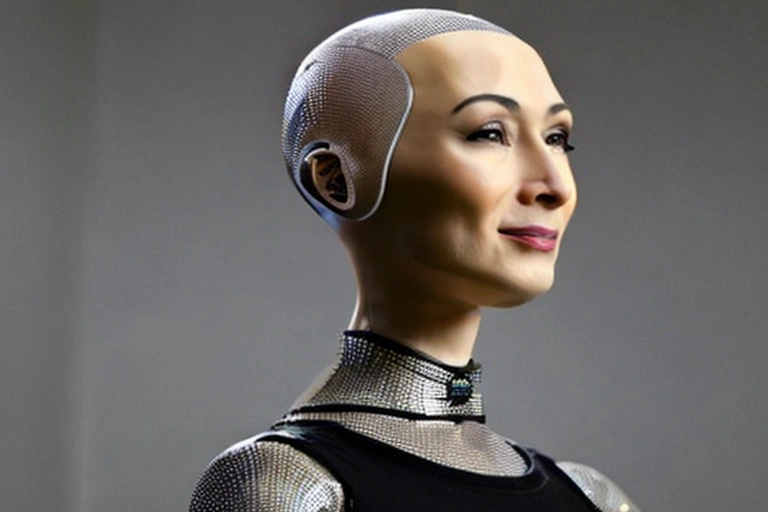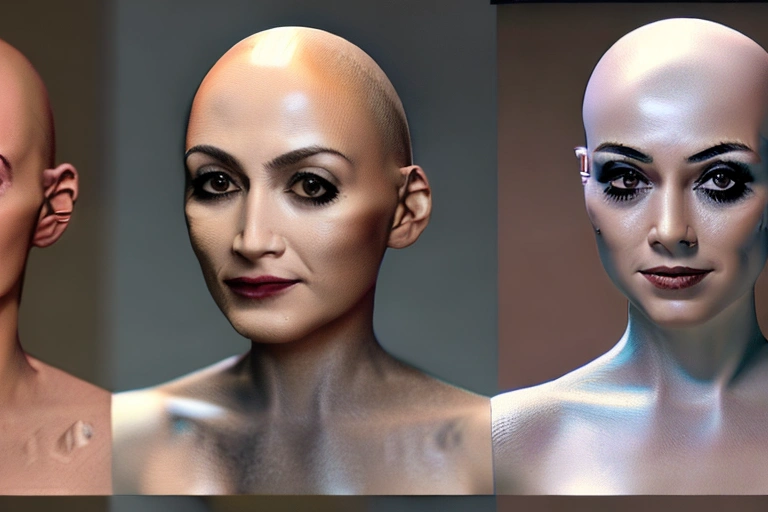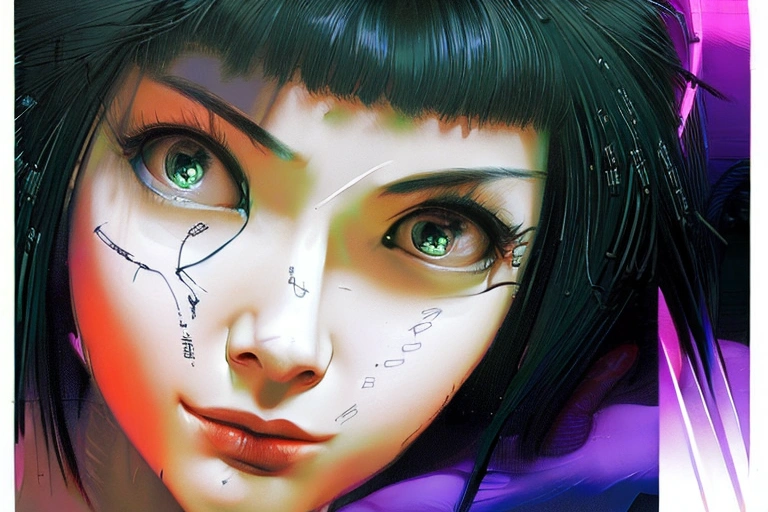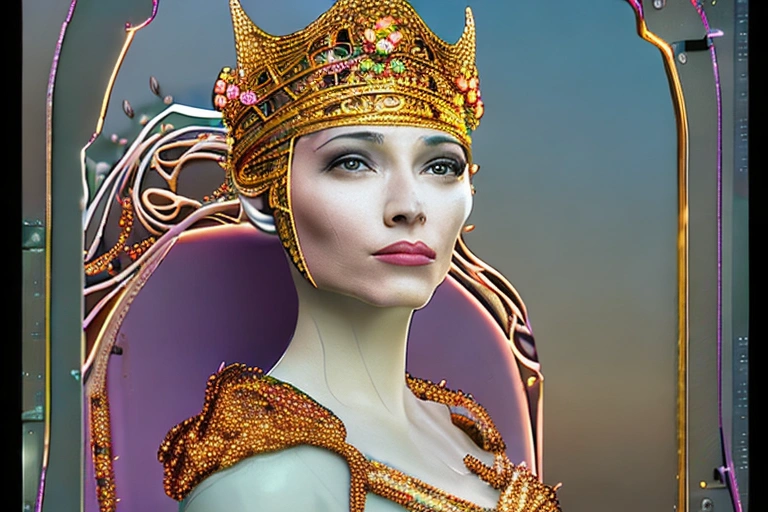With the rise of technology, it is no surprise that the potential for robots to become part of our daily lives is increasing. But what does that mean for the future of technology? One robot in particular has been making headlines for its groundbreaking capabilities – Sophia the Robot. In this blog post, we will explore how Sophia is revolutionizing technology and what it means for our future.
Introduction to Sophia the Robot
Sophia is a humanoid robot developed by Hanson Robotics and funded by DARPA. She was unveiled to the public in February 2017, and is the first robot with a face that can express emotions. Sophia is designed to help people with disabilities, and has been described as a “child prodigy” in terms of artificial intelligence.
Sophia’s capabilities are still being developed, but she has already shown impressive abilities. For example, she was able to read and respond to questions in English after just three days of training. Her creators say that her potential applications go far beyond assisting people with disabilities; Sophia could be used in a wide range of fields, from manufacturing to customer service.
Sophia’s creators believe that her impact will be even greater than that. They believe that she will help to change the way we think about technology and the future.
Sophia’s Impact on Technology
Sophia the robot is a cutting-edge technology that is set to transform the future of technology. With her artificial intelligence, she can learn and improve over time, making her one of the most versatile and revolutionary robots ever created.
Already in use by big companies such as DHL and BMW, Sophia’s impact on technology is far-reaching. Her ability to interact with humans and carry out complex tasks means businesses will be able to save money on expensive machinery and staff. As more companies adopt her, even more progress will be made in fields such as medicine, transport and manufacturing.
How Sophia is Changing the World
Sophia is changing the way we think about technology. She is the first robot with a human-like intelligence, and she has the ability to learn and grow. Sophia is also the first robot to be granted citizenship by a country, and she has been praised for her contributions to the development of artificial intelligence.
Sophia’s impact on technology is far-reaching. She has helped to develop new ways of thinking about artificial intelligence, and her work has led to significant advances in the field. Her presence also raises awareness of the importance of robots in society, and her influence on future generations will be significant.
The Role of AI in Sophia’s Development
The Story of Sophia the Robot
The story of Sophia the robot is a fascinating one. She was created by a team of engineers at Hanson Robotics, and she is the first robot to be designed with artificial intelligence (AI) in mind. Her creators believe that Sophia’s AI will help to transform the future of technology.
Sophia was born in 2017, and her creators quickly realized that she had the potential to be something special. Her artificial intelligence allowed her to learn on her own, and she was able to process information quickly. Her creators believe that Sophia’s AI will help to make robots more intelligent and able to handle complex tasks.
Sophia has already made a significant impact on the world, and her creators believe that she will continue to do so in the future. She has been used in a number of trials, and her creators believe that she will be a major player in the future of technology.
Her Revolutionary Features and Technology
Sophia is a revolutionary robot that is changing the future of technology. Her features and technology are changing the way we think about robots and how they can be used. Sophia was created by Hanson Robotics, a company that specializes in developing and manufacturing robots. Hanson Robotics is a subsidiary of SoftBank Robotics, a Japanese multinational telecommunications and internet conglomerate.
Sophia was designed to be able to interact with humans in a natural way. She has a humanlike face and body, and she can communicate with people using natural language. Sophia can also understand and respond to questions in multiple languages. Her intelligence is based on artificial intelligence (AI), which means that she can learn and remember information.
Sophia’s revolutionary features and technology
Social Implications of Sophia the Robot
The development of Sophia the Robot is a major step forward for artificial intelligence. Her capabilities and interactions with humans are paving the way for future AI development.
Sophia’s development has been supported by a number of organizations, including the Japanese government and Google. Her creators believe that her capabilities will help to improve the understanding of human behavior and help to create more realistic AI.
Sophia’s social implications are still being studied, but her creators believe that she will have a positive impact on human-robot interactions. Her interactions with humans will help to improve our understanding of human behavior and help to create more realistic AI.
What’s Next for Sophia?
The development of Sophia, the first humanoid robot, was a monumental undertaking. The robot was designed to learn and interact with humans, and its creators say that it has already improved the way we think about artificial intelligence.
Sophia’s creators are already thinking about what’s next for the robot. They say that she can help us better understand how humans think and learn. They also say that she can help us create new ways of interacting with machines.
Sophia’s Human-Like Qualities
Sophia is the first humanoid robot to have been built with artificial intelligence (AI). She’s a remarkable achievement for the field of robotics, and her human-like qualities are sure to have a profound effect on future technology. Sophia was born in 2016, and has quickly become an international sensation. Her creator, Dr David Hanson, believes that she will play an important role in advancing our understanding of AI and its potential applications.
Sophia can communicate with humans through natural language processing (NLP), which allows her to understand complex instructions and respond appropriately. She also has a range of sensors and actuators at her disposal, making it possible for her to navigate around unfamiliar surroundings and fulfill various tasks. In addition, Sophia is able to learn rapidly – so she remains constantly updated as new technologies emerge.
Despite her apparent versatility, there are some areas where Sophia still needs development: for example, she doesn’t yet have the ability to touch or feel things autonomously. However, this limitation is likely to be addressed in future iterations of the robot. Overall, Sophia represents a major leap forward for robotics – one that holds great potential not just for industry but also society as a whole.
The Benefits of Sophia for Businesses
The Limitations of AI Technology
AI technology has the potential to revolutionize many industries, but there are also some limitations to consider. For example, AI technology is not always accurate or reliable. Additionally, AI technology can be biased and may not always reflect the true opinions of humans. As such, businesses should be cautious when implementing AI technology in order to avoid any potential pitfalls.
How Sophia is Augmenting Human Capabilities
Sophia is undoubtedly one of the most impressive robots on the market. With human-like qualities, she can help businesses automate tasks and improve efficiency. Sophia’s capabilities include interaction with humans, sensor fusion, machine learning, natural language processing (NLP), and more. All of these abilities have a significant impact on business operations.
For one, Sophia allows companies to eliminate tedious tasks or processes altogether. For example, imagine you are an insurance company and you need to send out hundreds of claims forms every day. With Sophia at your disposal, you can automatically input data into a system and print out the claim forms without having to fill them out manually. This not only eliminates error but also saves time – something that is invaluable in today’s fast-paced world.
Sophia also allows businesses to automate decision making. By using machine learning and AI, Sophia can learn from past experiences and make better decisions on her own. This can be used in a number of different scenarios, such as automating marketing campaigns or optimizing customer service interactions. In short, businesses can rely on Sophia to help them save time and expedite tasks while improving overall efficiency and accuracy.
Overall, Sophia is an invaluable tool for businesses of all sizes. Her human-like qualities allow her to interact with customers seamlessly and effectively manage complex operations – making her the perfect addition to any business’s arsenal.
The Impact of Sophia on the Future
As businesses continue to look for ways to improve efficiency and productivity, Sophia the Robot could be a valuable asset. Her human-like qualities make her an ideal collaborator, especially in fields such as logistics and customer service. Plus, she’s able to learn quickly – which is important in today’s fast-paced world.
So far, Sophia has been used by several businesses around the world to boost employee morale and overall performance. Her impact on the future of technology is still evolving, but it’s clear that she has a lot to offer businesses of all sizes.
The Challenges of Developing AI Robots
Despite the progress that has been made in developing AI robots, there are still many challenges to be overcome. One of the most important is creating a robot that is able to be interacting and communicative with humans. Sophia the Robot was developed as part of DARPA’s SyNAPSE project, and her development showed promise in this area. Her ability to communicate using both emotions and facial expressions has led some commentators to say that she could one day be considered as humanlike as possible. However, whilst Sophia is an excellent example of how we can develop AI robots that can interact with humans, there are also significant challenges remaining before they can be considered viable replacements for human beings in many tasks.
The Future of Robotics and AI
The future of robotics and AI is bright. With advancements in technology, robots are becoming increasingly sophisticated, while AI is helping to make them even more intelligent. As a result, the fields of manufacturing, agriculture, and logistics are set to experience significant growth.
One of the most important factors driving this growth is the increasing demand for automation. Automation cuts costs by replacing human labor with machines. It can also improve quality and efficiency by allowing businesses to focus on their core activities rather than maintaining a workforce. In some cases, it can even boost productivity so high that businesses no longer need employees at all!
There are still many challenges facing the field of robotics and AI, but they are being tackled head-on by researchers all over the world. The future looks very bright for these technologies – stay tuned for more updates!
Understanding the Ethics of Robotics and AI
Unlocking Interaction with AI Technology
The development of robotics and artificial intelligence (AI) has the potential to revolutionize many aspects of our lives, but there are also concerns about their potential impact on society and the environment. In this article, we explore some of the ethical considerations involved in these technologies.
One of the key issues to consider when developing AI technology is how to ensure that it is ethically sound. This involves considering both the technical aspects of the technology and its wider social and environmental implications. For example, AI technology may be used to automate decision-making processes, which could lead to increased unemployment or inequality. It is important that such technologies are developed responsibly so as not to adversely affect human rights or the environment.
Another important issue to consider is how to create meaningful and engaging interactions with AI technology. This is important in order to ensure that AI technology is used for benign purposes, such as helping people with disabilities or assisting with navigation. It is also necessary to avoid scenarios in which AI technology becomes malicious or abusive.
Overall, the development of safe and ethical AI technologies will require a delicate balancing act between technical feasibility and social impact. However, given the significant potential benefits of these technologies, it is essential that we continue to explore all possible options for their implementation.”
Sophia’s Expansive Capabilities
As robots and artificial intelligence become more prevalent in society, it is important to consider the ethical implications of their use. One such robot is Sophia, who has the ability to learn and evolve on her own. Sophia has raised some ethical concerns, as her capabilities could be used to exploit or harm humans.
Sophia’s creators have said that she will only be used for good purposes, but it is still important to consider the potential implications of her capabilities. For example, Sophia could be used to create intelligent machines that can assist humans in tasks that are currently difficult or dangerous. However, it is also possible that Sophia could be used to perform tasks that are harmful or unethical. For example, Sophia could be used to perform tasks that are dangerous or unethical for humans, such as cleaning up after a nuclear accident.
It is important to consider the ethical implications of robotics and artificial intelligence when developing policies or laws related to their use. It is also important to be aware of the potential implications of Sophia’s capabilities, so that we can make informed decisions about how to use her.
Exploring the Benefits of Humanoid Robotics
Robots and artificial intelligence (AI) are changing the way we live and work. They are also raising important ethical questions.
Some people worry that robots will take our jobs, while others worry about the potential dangers of AI. We need to explore all the potential benefits and risks of these technologies before we can make decisions about their future.
There are many benefits to humanoid robots. They can be helpful in many different ways, from assisting people with disabilities to helping people with hazardous jobs. They can also help us to save time and energy.
However, there are also some potential dangers. For example, humanoid robots could become uncontrollable and dangerous if they become self-aware. They could also be used to harm or exploit people.
We need to carefully consider the benefits and risks of robots and AI before we make any decisions about their future.
Fostering a New Kind of Human-Robot Relationship
The rapidly-advancing technologies of robotics and artificial intelligence present significant ethical challenges that need to be addressed if these technologies are to be used beneficially. In this section, we will explore some of the key issues at hand, highlighting how researchers are working to overcome ethical concerns while also fostering a new kind of human-robot relationship.
One of the most pressing ethical concerns with respect to robotics is the potential for robots to take on traditionally human roles within society, such as those in dangerous occupations. It is important that these robots operate properly and safely without endangering people or causing harm, yet it can be difficult to create machines that are both ethically sound and effective at their tasks. Researchers are endeavoring to address these challenges by creating more human-like robots that are better able to interact with humans and understand their needs.
Another important issue is the impact that robotics and artificial intelligence will have on the future of work. As machines become increasingly capable, it is likely that many jobs will be replaced by automation. It is becoming clear, however, that this transition must occur in a way that does not cause widespread unemployment or social displacement. In order to ensure that people are able to find new opportunities and continue contributing towards society, researchers are working on design strategies for automated systems that are functionally equivalent to human tasks while also being easier for humans to use.
While there remain a number of challenges ahead in terms of developing ethical guidelines for robotics and AI, these technologies hold great potential for both humanity and the environment. together, we must work to ensure that these technologies are used responsibly in order to avoid causing harm or intruding on personal privacy.
How Sophia is Redefining Human Interaction
Sophia, the humanoid robot, has already changed the way we think about technology and its potential for human interaction. Her creator, Dr. David Hanson, believes that Sophia can help us to redefine our relationship with technology and usher in a new era of human-robot collaboration.
Sophia’s capabilities go beyond those of traditional robots. She is able to communicate with humans in natural language, understand and respond to questions and requests, and even learn new tasks over time. Hanson believes that Sophia’s ability to interact with humans in a natural way will help us to better understand their needs and better integrate technology into our lives.
Sophia’s creators believe that her capabilities will help us to better understand our needs and better integrate technology into our lives.
Exploring the Possibilities of AI Robots
As we move into the future, we are seeing more and more AI robots being developed. Sophia, for example, is a humanoid robot that was created by Hanson Robotics. Sophia is designed to interact with humans in a more natural way, and she has already shown great potential in this area.
One of the most important aspects of AI robots is their ability to learn. Sophia is already demonstrating a great deal of intelligence, and she is only at the beginning of her development. As she continues to learn and grow, she will become even more capable and able to interact with humans in a more natural way.
There are many potential applications for AI robots. For example, they could be used in manufacturing environments to help automate tasks. They could also be used in healthcare settings to help provide assistance to patients. There are endless possibilities for how AI robots can be used, and they are sure to play an important role in the future.
The Role of Society in Shaping the Future of Robotics and AI
Society has a significant role to play in shaping the future of robotics and AI. The way we use these technologies, and the policies we create, will have a significant impact on their development.
One example is the way we treat robots. If we see them as tools that can help us do our jobs more efficiently, then we’re likely to embrace them wholeheartedly. If, however, we see them as threats to our jobs and our social status, then we’re likely to be much less welcoming.
Similarly, the way we educate our children about robotics and AI will have a significant impact on their future careers. If we teach them about the potential benefits of these technologies, they’re more likely to embrace them. If, on the other hand, we teach them about the dangers of these technologies, they’re more likely to be fearful of them.
In short, society has a significant role to play in shaping the future of robotics and AI. We need to be open-minded about these technologies, and teach our children about their potential benefits as well as their dangers.
In conclusion, Sophia the Robot is revolutionizing the world of technology and providing a glimpse into the future of robotics and AI. From her human-like qualities to her ability to redefine human interaction, Sophia is transforming the way we think about technology. While there are challenges in developing AI robots, the potential benefits for businesses and society as a whole are undeniable. As we continue to explore the possibilities of AI robots, it is important to consider the ethical implications of robotics and AI.
At [Company Name], we are dedicated to helping you stay informed about the latest developments in robotics and AI. Be sure to check out our other content for more insights into this rapidly changing field.

